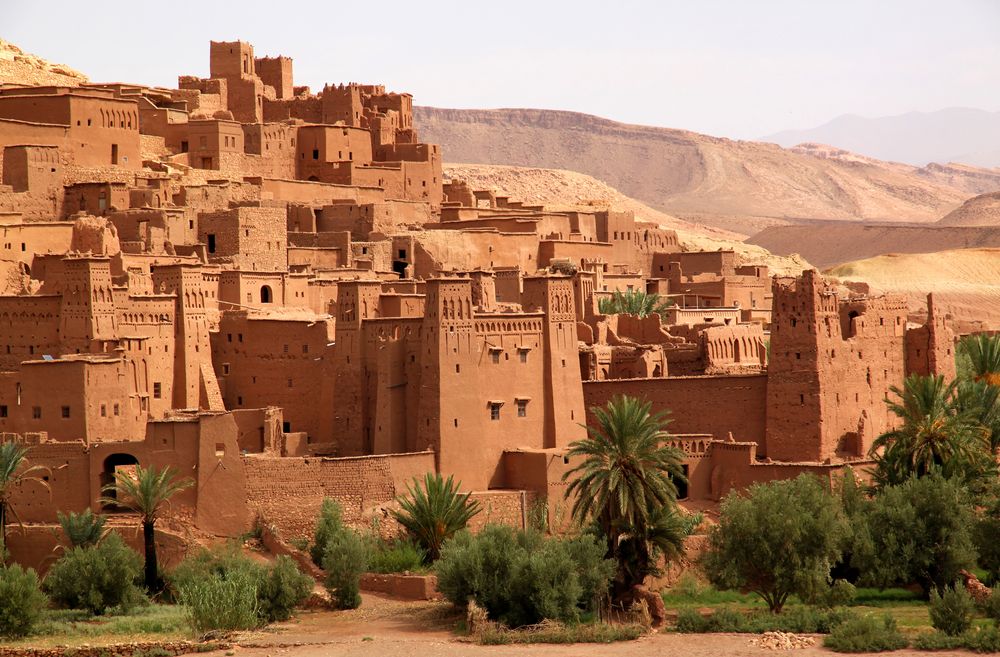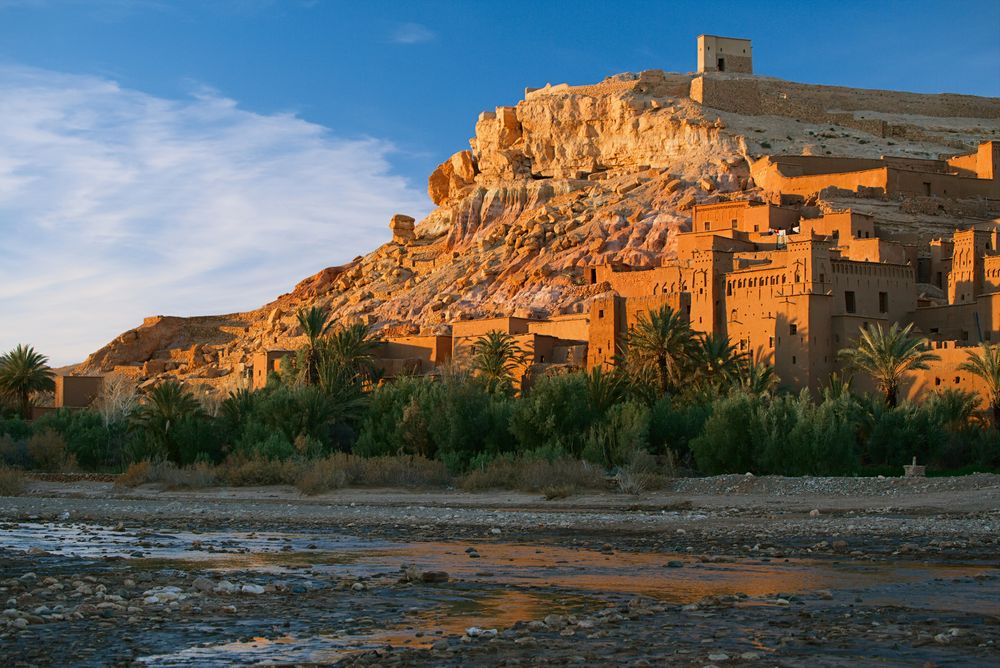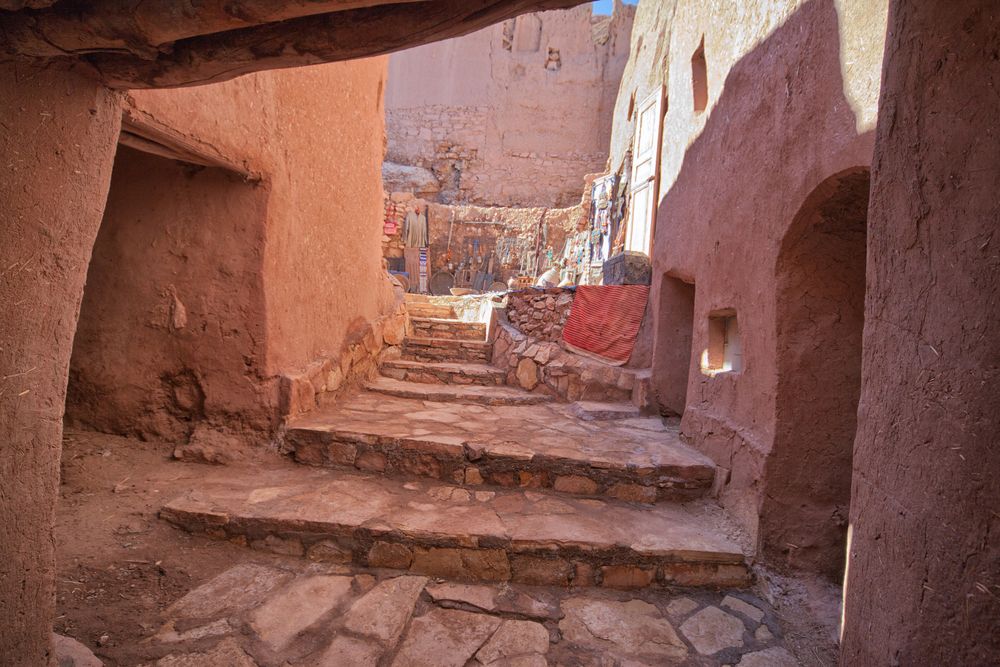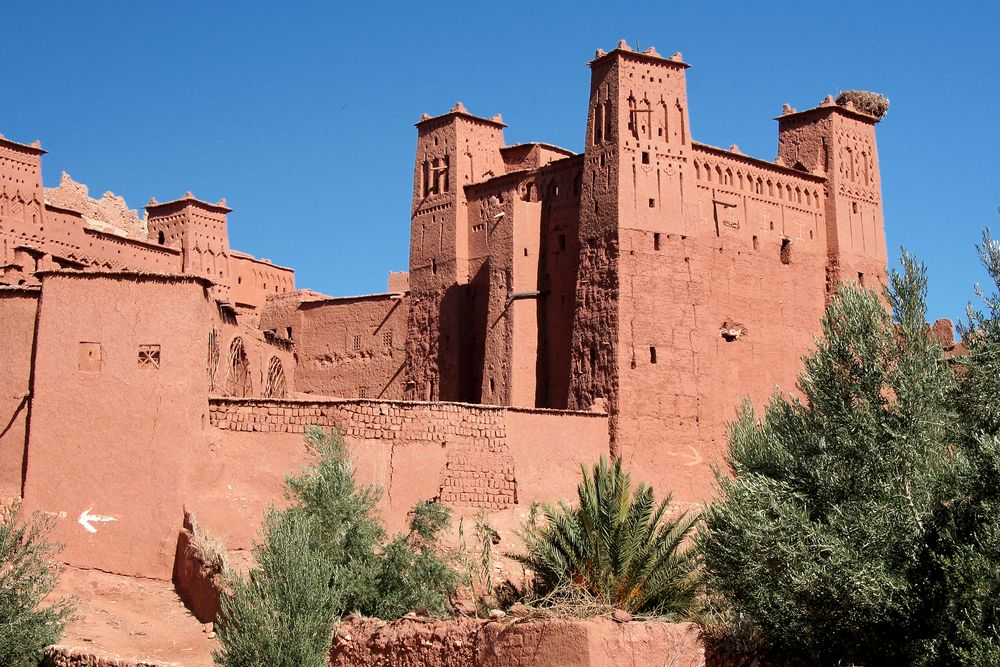A small but vibrant city high up on Atlas Mountains, Ouarzazate, in south-central Morocco, has long been called the “door to the desert”. It is also called the “Hollywood of Africa” because of the large number of films that have been shot here and the surrounding desert. Since at least the sixties, Hollywood directors have come here whenever they needed to shoot a Biblical movie or a movie set in the Middle East. The Lawrence of Arabia (1962), The Man Who Would Be King (1975), The Living Daylights (1987), The Last Temptation of Christ (1988), The Mummy (1999), Gladiator (2000), The Hills Have Eyes (2006), Babel (2006), and The Game of Thrones (2011-19), are just a few of the titles. Ouarzazate is also home to one of the largest movie studios in the world, Atlas Studios.

Photo: Javarman | Dreamstime.com
While the 322,000-square-feet filming location has everything from massive Egyptian tombs to giant prop jet planes to ruined castles, it is the natural setting that most directors are drawn to—the Ksar of Ait Benhaddou.
Located along the former caravan route between the Sahara and Marrakech, Aït Benhaddou is a historic ksar, or fortified village, with mud-brick houses crowded together and surrounded by high walls. This UNESCO World Heritage Site is considered a great example of Moroccan earthen clay architecture.
Perched on the slopes of a hill next to to the Ounila River, the village comprises of a collection of buildings of various sizes ranging from modest houses to tall structures with towers, all huddled together within a defensive wall that includes corner towers and a gate. Some of the buildings are decorated in their upper parts with geometric motifs. The village also has a number of public or community buildings such as a mosque, a caravanserai, a kasbah (castle-like fortification) and the Marabout of Sidi Ali or Amer. At the top of the hill, overlooking the ksar, are the remains of a large fortified granary. There is also a public square, a Muslim cemetery, and a Jewish cemetery.

Photo: Paop | Dreamstime.com
Although the original village dates back to the 11th century, none of the structures are older than the 17th century, because buildings made of rammed earth, adobe, clay bricks, and wood tend to crumble and require constant maintenance to keep them standing. At Ait Benhaddou, taller structures were made of rammed earth up to their first floor while the upper floors were made of lighter adobe so as to reduce the load of the walls.
The village was one of the many trading posts on the commercial route linking ancient Sudan to Marrakesh by the Dra Valley and the Tizi-n'Telouet Pass. The Tizi n'Tichka pass, which was reached via this route, was one of the few routes across the Atlas Mountains, crossing between Marrakech and the Dra'a Valley on the edge of the Sahara.
Surprisingly, the village is still inhabited, albeit sparsely. The village’s depopulation started in the beginning of the 20th century as the village lost its strategic importance. Most local inhabitants now live in modern dwellings in the village on the other side of the river, and make a living off agriculture and especially off the tourist trade. In 2011 a new pedestrian bridge was completed linking the old ksar with the modern village, with the aim of making the ksar more accessible and to potentially encourage inhabitants to move back into its historic houses.

Photo: Xantana | Dreamstime.com

Photo: Yakthai | Dreamstime.com

Photo: Elena Moiseeva | Dreamstime.com

Photo: Trofoto | Dreamstime.com

Photo: Sebastian Würfel | Dreamstime.com

Photo: Ionutadventures | Dreamstime.com

Photo: Sova004 | Dreamstime.com



Comments
Post a Comment